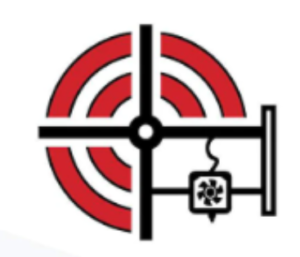Axtra3D hits Formnext 2025 with a big shift in strategy. The company isn’t just selling printers anymore; it’s selling a complete workflow. At the show, Axtra3D unveiled its new Axtra Workflow tools, including Axtra.Wash, Axtra.Cure, and Axtra.Insight, promising to make resin printing smoother from start to finish. The company also introduced a new group of elastomer materials for the LumiaX1 and other hybrid resin printers.
Axtra Workflow is also the first fully connected workflow built specifically around the company’s Hybrid PhotoSynthesis (HPS) technology, connecting printing, washing, curing, and data analytics into a single continuous process.
What Axtra Workflow Is
According to Axtra3D, most bottlenecks in resin 3D printing happen after the print is done. Washing, curing, and verifying parts all take time, often with a mix of tools from different suppliers. Axtra3D wants to bring all of that under one roof, using machines that “talk to each other” and help reduce slowdowns in the steps between printing and final delivery.
Chief Strategy Officer Rajeev Kulkarni explains that “Manufacturers need more than one-off print wins. They need validated, repeatable workflows that scale from prototype to production. Axtra Workflow solves that problem by tightly integrating printing and processing hardware, materials, and software into a learning, traceable production system.”
So instead of presenting these as add-ons, Axtra3D is positioning them as one connected ecosystem, something many resin users have wanted for a long time, states the company.
The firm also points out that the entire workflow is validated end-to-end. Material profiles, printer parameters, wash cycles, and cure settings are created together — not separately — so customers don’t need to troubleshoot mismatched settings or requalify every step.

The Axtra workflow. Image courtesy of Axtra3D.
Axtra.Wash: Faster, Cleaner Post-Processing
Axtra.Wash is the company’s new automated wash station. It uses dual-stage cleaning, optimized agitation, and a closed-loop solvent system so users can clean parts without wasting IPA or dealing with messy drying steps.
The system recognizes LumiaX1 build trays, loads presets automatically, and logs wash data for traceability. For service bureaus and medical users, this is where the value shows: repeatability, less manual work, and fewer ruined parts.
Axtra.Cure: Full, Even Curing With Less Guesswork

The new Axtra.Cure. Image courtesy of Axtra3D.
Curing is another area where resin users often lose time, states the company. Axtra.Cure addresses that with stronger and more even light delivery, controlled heating, and preset profiles tied to Axtra3D’s own materials. The company stresses that its goal wasn’t just faster curing, but more predictable curing, something customers in dental, medical, and aerospace always ask for.
Axtra.Cure also merges UV and thermal curing in one system, with multiple wavelength zones and high-temperature cycles. Axtra3D says this expands the types of engineering resins the LumiaX1 can support in production.
Axtra.Insight: Quality Control Built Into the Workflow
Axtra.Insight is what ties the whole system together. It’s a software layer that tracks print jobs, wash cycles, curing cycles, and material usage, giving operators a single place to manage everything.
This is clearly aimed at customers who run larger fleets or need clean documentation for regulated environments. Insight doesn’t replace existing MES tools—at least not yet—but it fills the gap between the printer and the rest of the production workflow.
The platform also pulls data from more than 150 sensors across the printer, wash unit, and cure station, giving layer-level visibility into the complete HPS production chain.
A Better LumiaX1
Axtra3D is also updating its flagship printer. The new LumiaX1 comes with a larger build volume and refinements to its HPS system, which blends DLP and scanning light to preserve detail without sacrificing speed. The company says the new version delivers tighter accuracy across the entire build plate and better thermal control for engineering resins.
For users who already know the LumiaX1, this isn’t a small update — it’s the type of upgrade that moves the machine further into true production territory.
Axtra3D isn’t the first company to offer a full start-to-finish workflow. Formlabs already does this with its wash and cure units and automation tools for the Form printers. Stratasys has also integrated its printers, materials, and post-processing steps into one “controlled system” for its industrial customers. Carbon also offers a full, connected workflow designed to move parts from printing to washing, curing, and finishing with as little friction as possible. What Axtra3D is doing now follows that same trend, offering a complete, connected workflow instead of leaving users to mix and match tools from different brands on their own.

Part made with Loctite® 3D IND475. Image courtesy of Axtra3D.
On top of the workflow tools, Axtra3D is introducing three newly validated elastomer materials for its LumiaX1 and Axtra Workflow system as part of its Axtra Solutions line. These include Loctite 3D IND475, Loctite 3D Med414, and Ultracur3D EL 4000. All three elastomers are validated for the LumiaX1 and tuned for Axtra.Wash and Axtra.Cure, which helps keep print results consistent across the full workflow. The updates also improve compatibility across Axtra Solutions and Axtra OpenAccess materials.

Part made with Loctite® 3D Med414. Image courtesy of Axtra3D.
IND475 is a soft, durable elastomer designed for gaskets, seals, housings, and other flexible parts that need good “snap-back” behavior. Med414 is a medical-grade blue elastomer designed for use in wearables and components that come into direct contact with the skin. It can stretch up to 240%, making it useful for soft interface parts and other patient-specific applications. Made with ForwardAM, Ultracur3D EL 4000 is the toughest of the three, with higher hardness and strong tear resistance, making it ideal for footwear, cushioning, and other flexible end-use products.
Axtra3D says the goal is to give customers more production-ready materials that cover a wider range of applications, not just prototyping. The elastomers also strengthen the company’s materials ecosystem, which mixes fully validated options (Axtra Solutions) with more open exploration for advanced users (Axtra OpenAccess).

Part made with Ultracur3D® EL 4000 from ForwardAM. Image courtesy of Axtra3D.
Why This Matters Going Into 2026
Formnext always debuts plenty of printers, materials, and upgrades, but full workflows are still unique. Many companies offer strong hardware, yet only a few try to cover the entire process. That’s what makes this launch stand out. For Axtra3D resin, 3D printing isn’t just about the printer anymore; it’s about making the whole process easier, faster, and more predictable.
Formnext 2025 visitors can view the complete Axtra Workflow at the company’s stand in Hall 11.1, Booth 41C, from November 18 to 21.
Subscribe to Our Email Newsletter
Stay up-to-date on all the latest news from the 3D printing industry and receive information and offers from third party vendors.





